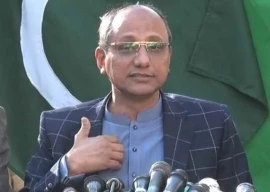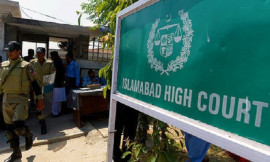
The figures released by the NGO show that in 2010, a total of 2,689 children were subjected to various forms of violence in just Sindh.
Sohail Abro, Sparc provincial manager, believes that the poor prosecution system in Pakistan has a major role to play in this increase. “The perpetrators never get punished and they manage to escape using the loopholes in the law,” he said. He pointed out that except for the legislation on child rights in Khyber-Pukhtunkhwa — the Child Protection and Welfare Act, 2010 — no concrete steps were taken towards children’s rights in Sindh, or the rest of the country for that matter.
These figures reflect only those incidents or cases that have been reported in newspapers and other sources of media. The actual number of cases, the NGO says, is likely to be almost two to three times higher.
At least 233 children were murdered in different crimes, including the flurry of violence caused by political and religious disturbances. Sixty-eight children were tortured by non-state actors, four were burnt to death and 12 were victims of acid attacks.
In addition to 97 cases of polio diagnosed last year, 47 children lost their lives while being treated in public health settings. Most of the deaths were caused by alleged negligence of doctors or because of a shortage of medicines.
The unmanageable traffic in the province claimed the lives of 148 children and injured 57. Added to the man-made disasters, the flood and its aftermath brought diseases such as diarrhoea, gastroenteritis, malaria and other water-borne illnesses, which claimed the lives of 127 children living in relief camps across the province. Meanwhile, according to UN estimates, 3.5 million children were at risk of water-borne diseases.
Another crime on the rise in 2010 was kidnapping — 212 children were kidnapped and most of them were subjected to brutal forms of violence during their abduction. Children from minority communities were the most vulnerable in these kidnapping for ransom cases.
Under-age marriages brought an abrupt end to the childhood of 50 children, majority of them female, while 35 children were sold on various pretexts- once again the majority of victims were little girls. Twenty-five under-18 girls were ‘given in compensation’ to offended parties under decisions taken in jirgas held by tribal chiefs. Such jirgas are being held in spite of the ban put in place by the high court in 2004.
Seven cases of cyber crimes were highlighted in the media. These victims had either been harassed or blackmailed by someone who had made videos or taken photographs of them. A few of these videos were also uploaded on websites.
Fifty-one under-18 children attempted suicides, with 32 of them ending in deaths.
Meanwhile, even places that are supposed to offer refuge proved to be hazardous with 56 children subjected to corporal punishment in homes, educational institutions, madrassahs and workplaces.
According to statistics released by another NGO, Sahil, till June 2010, 331 boys and 885 girls were raped.
The condition of juveniles did not improve either. Till December 2010, there were 233 juvenile inmates in different prisons of Sindh. Out of these, 220 are under trial while 13 are convicted.
Published in The Express Tribune, January 10th, 2011.
1737186866-0/fizza-(10)1737186866-0-405x300.webp)
1737184138-0/fizza-(9)1737184138-0-165x106.webp)












1732012115-0/Untitled-design-(14)1732012115-0-270x192.webp)








COMMENTS
Comments are moderated and generally will be posted if they are on-topic and not abusive.
For more information, please see our Comments FAQ